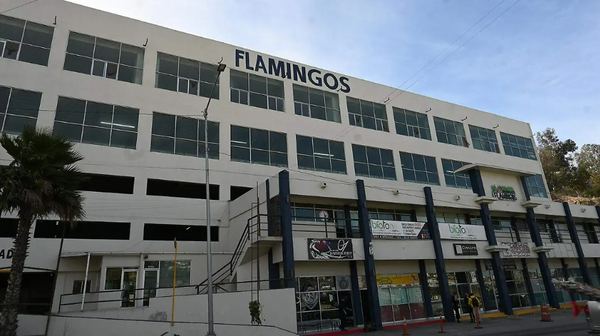
The scene was a common one for a team with new coaching and scouting staffs. Last February, incoming Commanders coach Dan Quinn had his staff assemble and present profile tapes to new GM Adam Peters’s personnel group. Position-by-position, they went through the particulars in what—exactly—the coaches wanted the scouts to look for.
Few, if any, in the room knew that they were pretty much looking at their 2024 team.
Austin Ekeler popped up on the screen. Dorrance Armstrong did, too. So did a bunch of others who wound up working down the hall from that room. And inexplicably, some 11 months later, those guys have come together to arrive in the NFC championship, way, way, way before anyone, even the guys in charge, expected.
On this morning of the title games, we’re giving our annual breakdown of the conference finalists’ rosters. Three of the four were pretty conventionally built for 2024. Two, in fact, are mirror images of each other statistically—the Bills and Chiefs each have 34 homegrown guys, 16 free-agent signings, and three trade acquisitions. Then, there’s the outlier that was built in those rooms in Virginia back last winter.
Here's a look at the numbers …
Buffalo Bills
Homegrown on the 53: 34 (27 draftees, 7 college free agents)
Outside free agents on the 53: 16
Trades/waiver claims on the 53: 3
Practice-squad acquisitions: 0
Quarterback acquired: Drafted Josh Allen 7th overall in 2018 (trade up)
Last five first-round picks: TE Dalton Kincaid (No. 25, 2023), CB Kaiir Elam (No. 23, 2022), DE Gregory Rousseau (No. 30, 2021), DT Ed Oliver (No. 9, 2019), Allen (No. 7, 2018), LB Tremaine Edmunds (No. 16, 2018)
Top five cap figures: Allen $30.356 million, DE Von Miller $14.839 million, LB Matt Milano $12.437 million, OT Dion Dawkins $11.51 million, DT Ed Oliver $9.73 million
Kansas City Chiefs
Homegrown on the 53: 34 (25 draftees, 9 college free agents)
Outside free agents on the 53: 16
Trades/waiver claims on the 53: 3
Practice-squad acquisitions: 0
Quarterback acquired: Drafted Patrick Mahomes 10th overall in 2017 (trade up)
Last five first-round picks: WR Xavier Worthy (No. 28, 2024), DE Felix Anudike-Uzomah (No. 31, 2023), CB Trent McDuffie (No. 21, 2022), DE George Karlaftis III (No. 30, 2022), RB Clyde Edwards-Helaire (No. 32, 2020)
Top five cap figures: Mahomes $37.008 million, OG Joe Thuney $26.972 million, TE Travis Kelce $19.552 million, OT Jawaan Taylor $19.392 million, S Justin Reid $14.25 million
Philadelphia Eagles
Homegrown on the 53: 30 (28 draftees, 2 college free agents)
Outside free agents on the 53: 17
Trades/waiver claims on the 53: 4
Practice-squad acquisitions: 2
Quarterback acquired: Drafted Jalen Hurts 53rd overall in 2020
Last five first-round picks: CB Quinyon Mitchell (No. 22, 2024), DT Jalen Carter (No. 9, 2023), OLB Nolan Smith (No. 30, 2023), DT Jordan Davis (No. 13, 2022), WR DeVonta Smith (No. 10, 2021)
Top five cap figures: OT Lane Johnson $15.868 million, Hurts $13.567 million, WR A.J. Brown $11.837 million, OT Jordan Mailata $11.616 million, CB Darius Slay $10.652 million
Washington Commanders
Homegrown on the 53: 22 (21 draftees, 1 college free agent)
Outside free agents on the 53: 27
Trades/waiver claims on the 53: 3
Practice-squad acquisitions: 1
Quarterback acquired: Drafted Jayden Daniels 2nd overall in 2024
Last five first-round picks: Daniels (No. 2, 2024), CB Emmanuel Forbes (No. 16, 2023), WR Jahan Dotson (No. 16, 2022), LB Jamin Davis (No. 19, 2021), DE Chase Young (No. 2, 2020)
Top five cap figures: WR Terry McLaurin $24.1 million, DT Daron Payne $21.61 million, DT Jonathan Allen $21.441 million, OT Andrew Wylie $9.417 million, Daniels $6.867 million
The difference in those numbers, of course, is stark enough.
But dig deeper, and you’ll find that, really, so much of this team actually was built overnight. Only 19 players on the team’s current 53-man roster remain from last year—meaning you couldn’t even field a starting lineup of players who were in D.C. for the 2023 season. Going deeper, just six remain from Ron Rivera’s first year in 2020.
So how did this happen?

This, of course, starts with having the second overall pick, and landing a quarterback who is authoring one of the greatest rookie seasons a player at his position has ever had. That, of course, goes a long way toward making it work at other positions where you may be short.
But there’s a lot more to this story, which, in some ways, was actually accidental.
When the team-building process began, and the roster looked like it was a million miles away from a day like this particular Sunday, no one was thinking about microwaving a Super Bowl team. The idea for a short-staffed personnel department—Peters, assistant GM Lance Newmark, senior personnel executive Martin Mayhew and senior vice president Rob Rogers were running what felt like a start-up—was to lay a foundation for the future.
That started by defining what Quinn and Peters wanted in a Commander, regardless of position, which became their north star. As one staffer described it, it’s “a great competitor, great teammate who’s loving football and putting the team first.” They, of course, felt like they could find that on tape in a player’s play style, and the violence, aggression and physicality he played with.
But in assessing whether a guy has those traits, there is usually some guesswork involved. So the Commanders used the staff they had to take the projecting out of it, as best they could—and given who they had on staff, there was a lot they could do.
Anthony Lynn vouched for Ekeler, whom he coached as a Charger. Quinn himself and Joe Whitt Jr. knew exactly who Dorance Armstrong, Dante Fowler Jr., Noah Igbinoghene and Tyler Biadasz were, coming from Dallas, and Quinn coached Bobby Wagner a decade ago in Seattle and Olamide Zaccheaus and Mykal Walker in Atlanta. Kliff Kingsbury had Zach Ertz in Arizona. Shane Toub had a relationship through his dad, Chiefs special teams coach Dave Toub, with Nick Allegretti, and Nick Bellore was with special teams coach Larry Izzo in Seattle.
It spilled over, too, into the holdovers—where Quinn and Peters leaned on assistants from Rivera’s staff, like Bobby Engram, to make decisions on bringing Jamison Crowder, Jeremy Reaves and Cornelius Lucas (with Reaves becoming, in many ways, a bellcow for Quinn’s program) back for 2024. Peters’s own history showed up too, in the arrival of ex-Niners Sheldon Day and Clelin Ferrell (Ferrell played for DL coach Darryl Tapp in San Francisco).
And then, there were Frankie Luvu and Jeremy Chinn coming over from the Panthers. They were the two eliciting the greatest league-wide response (as the texts to Peters’s phone indicated it, anyway) as free agency was ongoing in March, and those two, you could argue, have had the biggest impact of any of the veteran additions. They represented, without any Carolina people on staff, probably the biggest leaps of faith that Quinn and Peters made.
But even in those cases, Peters could leverage his relationship with ex-Panthers GM Scott Fitterer, who was taking some time off after Carolina let him go in January, to try and ascertain their fit. Fitterer, by the way, was hired by the Commanders after the draft.
Of course, all of this wasn’t automatic.
It did, though, give the Commanders some certainty.
Newmark ran point in unifying the coaching and scouting staffs to form a singular vision, building relationships, leading and executing deals. Mayhew’s background with Peters and the organization was key. And Rogers worked tirelessly to hammer out the right contracts.
Which, in the end, helped fast track Peters and Quinn—who didn’t really know each much before their arranged marriage—to meshing philosophies and bringing in the right guys.
So where, then, did it turn from having a team that they liked into one that could contend?
A 37–20 loss in Tampa to open the season sure didn’t do it, nor did a Week 2 squeaker over the Giants—the Commanders kicked seven field goals to beat New York that day, 21–18.
After that, things shifted. They upset the Bengals on a Monday night, then spent the following week in Arizona ahead of a game against the Cardinals. Late Thursday night, with the team staying in Scottsdale, giving everyone plenty of options, the coaches and staff noticed the light was on in the quarterbacks room. The guys were in there, talking trash and watching the Giants-Cowboys game together. The next night, a bunch of groups of players went out to dinner together without anything having been arranged for them.
A few staffers who assembled the Washington roster saw that and, right there, said to each other, We might really have something here. The culture they were looking for was coming to life. And a couple days later, a 42–14 of the Cardinals showed the football part of the equation wasn’t far behind.
Clearly, they haven’t looked back since.
This article was originally published on www.si.com as The Commanders’ Turnaround Came Even Quicker Than They Expected.







